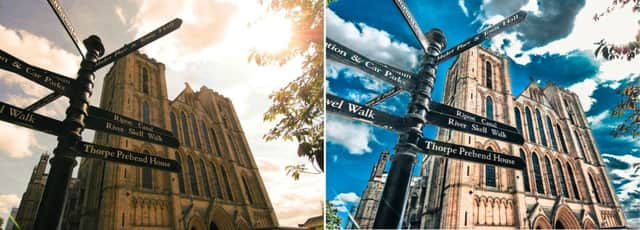How to get Lightroom or Premiere results for free


The phrase, often shortened to just “post”, refers to any production that takes place after the shooting itself. In the case of video, it begins with the assembling of the raw footage and encompasses special effects, sound mixing and colour balancing. It has been that way more or less since Edison’s day
Likewise, photographs have long been “retouched” to emphasise or hide skin tone and background details, or reduce the effects of flash-induced red-eye - but it has taken the digital revolution to realise the wholesale editing of individual pictures and the application of one-click effects that can turn a day shot into night or vice versa.
Advertisement
Hide AdAdvertisement
Hide AdEditing and manipulation software these days runs on a standard PC or laptop, and the excellence of expensive proprietary programs like the Adobe suite of Photoshop, Lightroom and Premiere is almost matched by credible alternatives that are freely available.
Video editing to the highest technical standards can be carried out on a piece of software called Lightworks, an app that was in its original incarnation in the 1990s used by the BBC and which is now open to everyone. Programs like this are a huge leap from the basic video editors that come free with camcorders and with some versions of Windows; they will let you mix layers of sound and vision, manipulate the picture across three planes of movement, and add effects that transform the look of the video.
It’s done in four stages: importing the raw clips from a camera or your hard drive, trimming and assembling them into a sequence, processing the sound and video and exporting the finished sequence to YouTube or wherever you plan to play it.
There is a learning curve to all this, and it is not helped by the fact that every editing program is different - but with no outlay involved, you have nothing to lose by experimenting.
Advertisement
Hide AdAdvertisement
Hide AdThe post-production of pictures is a lot easier - and if you use the simplified editing tools in Google Photos, you may not even realise you’re doing it. You can adjust the white balance, straighten your image and tweak the exposure to affect just the highlights or shadows, if you want. Google also provides a small library of predefined colour filters that you can use to stylise the final result.
But two free programs - Lightzone and RawTherapee - take the principle a stage further, with granular control of every aspect of the image. Like the professional Adobe Lightroom, they work “non-destructively”, storing your changes in a separate file to the original photo, so you can reverse any or all of your edits later. You can also apply changes to a batch of pictures at once, if you wish.
Programs like this also let you merge two or more similar pictures to create panoramas or combine the best-exposed elements of each to create a perfectly-lit result. In some cases, you can even correct the effects of distortion introduced by your lens.
A few minutes with one of these programs can turn your casual snaps into photographs you will want to show off - and if we’re honest, which of us doesn’t want to do that?